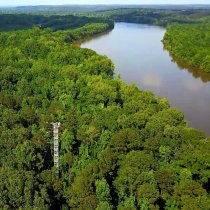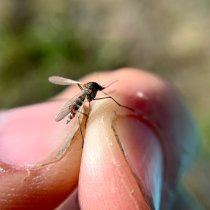In choosing taxa for the continental scale
June 16, 2010
Over my past two and a half years at NEON, there is one question that I have been asked more than any other: Why is NEON not studying *--insert taxon of interest--*? I think an easier way to address this question would be to consider: How did NEON choose its sentinel taxa (i.e., organisms of focus)? NEON is tasked with enabling research that addresses several Grand Challenges (biogeochemistry, biodiversity, climate change, ecohydrology, infectious disease, land use and invasive species). To best address the Grand Challenges, NEON selected key sentinel organisms the Fundamental Sentinel Unit (FSU) team will observe that represent different phylogenetic complexities, life histories, and responses to community and environmental changes. These organisms all have broad geographic distributions, generally have high population turnover rates, and are thought to be sentinels of changes in the environment. Sentinel organisms were also chosen to represent a broad spectrum of taxon sensitivity to various changes in community composition, land use, and climate. With these objectives in mind, NEON will focus on the following sentinel taxa: soil bacteria, archaea and fungi; ground beetles; mosquitoes; small mammals such as Peromyscus spp (deer mice); plants; and birds. NEON will also focus on several aquatic sentinels, but I will only discuss the terrestrial sentinel taxa here.
Soil microbes have been chosen because they are intimately tied to ecosystem function and health and have the ability to respond rapidly to environmental changes. Developing an understanding of their phylogenetic diversity, their role in biogeochemical processes, and how these relate to one another will address three of NEON’s Grand Challenges.
Ground beetles are well known taxonomically. Further, they are relatively common in many habitats, are known to be sensitive to habitat change, vegetation and soil conditions, and have been extensively used as indicators of environmental change.
Mosquitoes were chosen because they are ubiquitous and important vectors of disease. They are also relatively easy to sample and populations are sensitive to climate variation. Mosquito species range expansions and invasions of non-native species are presently occurring (e.g., Aedes albopictus, which is spreading across North America) and expected to increase with warming climates in temperate latitudes, which can impact the spread of disease.
Peromsycus serve as sources of infectious disease including Hantavirus, Lyme disease, plague, and tularemia. Peromyscus spp population size can be linked to land use and climate change, and therefore it also serves as a good indicator species. Long-term monitoring of plant communities will help address changes in biodiversity, invasive species, and productivity. Additionally, three species shall be chosen at each site to study phenology.
Birds were chosen because of the long history of data collection at the national scale, and the ability to tie into a larger dataset to examine long term trends. Bird diversity is related to several of the grand challenge areas (e.g., diverse bird communities can be indicators of highly functioning food webs).
While one would love to be able to study all things at all times, clearly, as with all projects, one must make hard decisions to limit the scope of the research so that the work is meaningful and can still be done within a defined budget. Though I was not involved with NEON during the original taxon selection process, I now have a deep appreciation for the impacts of taxon selection on the larger project and how difficult it is to design a project with the large spatial and temporal scope that NEON has. I think it is useful to remember the context in which these taxa have been chosen and how they will be used during NEON operations. Given NEON’s large scope and the requirement to design standardized sampling methods for all sentinel taxa at all 60 NEON sites, I think the sentinel taxa do a very good job addressing all of the Grand Challenges and will provide an enormous wealth of data across several trophic levels.

